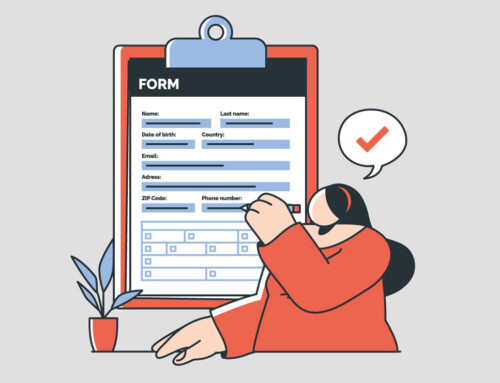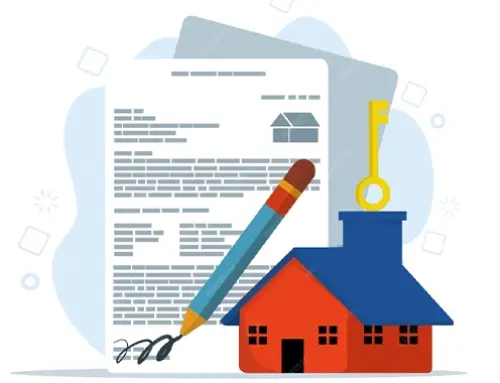Contents
What is an Artwork Licensing Agreement?
An artwork licensing agreement, also known as a copyright contract for artists, is a legal contract between the owner of an artwork (the licensor) and another party (the licensee) who wishes to use the artwork for specific purposes.
An artwork licensing agreement ensures that the artist retains ownership while granting specific usage rights to the licensee under clearly defined terms. By outlining the scope of the license, compensation, usage restrictions, and other essential provisions, an artwork licensing agreement protects the intellectual property rights of the artist and provides legal clarity and security for both parties. These agreements are indispensable across various industries such as publishing, advertising, merchandise production, and digital media, helping to prevent unauthorized use and misunderstandings. Through a well-structured agreement, both licensor and licensee can benefit from a mutually beneficial relationship, ensuring the artwork’s proper use and fair compensation for the artist.
What Are Essential Terms to Include in an Artwork Licensing Agreement
Key elements of an artwork licensing agreement typically include:
Parties Involved
- Licensor: The artist or copyright holder who is granting the license.
- Licensee: The individual or company receiving the license to use the artwork.
Artwork Description: A detailed description of the artwork being licensed, including any relevant images, titles, or specifications.
Grant of Rights: Specifies the exact rights being granted to the licensee, such as:
- Reproduction rights
- Distribution rights
- Display rights
- Modification or adaptation rights
Scope of License: Defines the limitations of the license, including:
- Territory: Geographic areas where the licensee can use the artwork.
- Duration: The time period for which the license is valid.
- Media: Types of media or products where the artwork can be used (e.g., print, digital, merchandise).
Exclusivity: Specifies whether the license is exclusive or non-exclusive. An exclusive license means only the licensee can use the artwork in the specified manner, while a non-exclusive license allows the licensor to grant the same rights to multiple parties.
Compensation: Details of payment or royalties to be paid to the licensor, including:
- Fixed fee or advance payment
- Royalty rate (percentage of sales or profits)
- Payment schedule
Usage Restrictions: Any specific limitations on how the artwork can be used, such as prohibitions on altering the artwork or using it in certain contexts.
Quality Control: Provisions allowing the licensor to approve the quality and manner of the artwork’s use.
Credit and Attribution: Requirements for how the artist should be credited when the artwork is used.
Intellectual Property Ownership: Clarification that the licensor retains ownership of the artwork and all associated intellectual property rights.
Termination: Conditions under which the agreement can be terminated by either party, such as breach of contract or mutual agreement.
Warranties and Representations: Statements ensuring that both parties have the legal right to enter into the agreement and that the artwork does not infringe on any third-party rights.
Indemnification: Provisions requiring the licensee to compensate the licensor for any losses or damages resulting from the licensee’s use of the artwork.
Governing Law and Dispute Resolution: Specifies the legal jurisdiction governing the agreement and the method for resolving any disputes (e.g., arbitration, mediation, court).
Signatures: Signatures of both parties, indicating their agreement to the terms.
Including these elements helps ensure that both the artist and the licensee have a clear understanding of their rights and obligations, reducing the potential for disputes.
What Are the Advantages of an Artwork Licensing Agreement?
An artwork license agreement offers several advantages for both the licensor (the owner or creator of the artwork) and the licensee (the party seeking to use the artwork). These benefits include:
For the Licensor (Artist or Creator)
- Revenue Generation: An artwork licensing provides an additional income stream without the need to sell the original piece. The artist can earn artwork licensing fees, royalties, or both.
- Retained Ownership: The artist retains ownership of the artwork, allowing them to license it to multiple parties if the agreement is non-exclusive, thus maximizing potential earnings.
- Exposure and Recognition: Artwork licensing can increase the visibility of the artist’s work, leading to greater recognition and potential opportunities for future projects.
- Control Over Usage: The agreement allows the artist to specify how their artwork can be used, ensuring it aligns with their personal and professional values.
- Protection of Rights: The agreement legally protects the artist’s intellectual property, reducing the risk of unauthorized use or infringement.
For the Licensee (User of the Artwork)
- Access to High-Quality Artwork: Licensees can use professionally created artwork that enhances their products, marketing materials, or other projects without the need to create it themselves.
- Brand Differentiation: Unique and distinctive artwork can help differentiate a brand, product, or service in the marketplace.
- Legal Clarity and Security: The agreement provides clear terms regarding the use of the artwork, minimizing the risk of legal disputes and ensuring that the use is legally compliant.
- Flexibility in Use: Depending on the terms of the agreement, the licensee can use the artwork across various media and platforms, potentially reaching a wider audience.
- Cost-Effective: An artwork licensing can be more cost-effective than commissioning custom artwork, especially for small businesses or projects with limited budgets.
Mutual Benefits
- Clear Expectations: The agreement sets out clear expectations and responsibilities for both parties, reducing misunderstandings and fostering a positive working relationship.
- Professionalism: Having a formal agreement demonstrates professionalism and commitment, which can enhance the reputations of both the licensor and licensee.
- Opportunities for Collaboration: An Artwork Licensing agreements can lead to further collaborative opportunities, such as co-branding initiatives, joint marketing campaigns, or future projects.
- Preservation of Artistic Integrity: With clearly defined terms, the artist can ensure that their work is used in a manner that respects their creative vision and integrity.
- Market Expansion: For both parties, licensing can open doors to new markets and audiences, expanding their reach and influence.
Overall, an Artwork Licensing Agreement provides a structured and legally sound framework for the use of artwork, benefiting both the artist and the user by ensuring fair compensation, protection of rights, and mutual respect for each party’s interests.
What Are the Main Types of Artwork Licensing Agreement
Artwork licensing agreements can take various forms depending on the intended use and the rights granted. Here are the main types of artwork licensing agreements:
Exclusive License
-
- Grants the licensee exclusive rights to use the artwork in specified ways.
- The artist agrees not to license the same rights to any other party.
- Often includes higher fees due to the exclusivity.
Non-Exclusive License
-
- Allows the artist to license the same rights to multiple licensees.
- The licensee does not have exclusive control over the use of the artwork.
- Generally less costly than an exclusive license.
Territorial License
-
- Limits the use of the artwork to a specific geographic region.
- Can be either exclusive or non-exclusive within the defined territory.
Single-Use License
-
- Grants the licensee the right to use the artwork for a one-time specific purpose.
- Common for single publications, advertisements, or products.
Multiple-Use License
-
- Allows the licensee to use the artwork multiple times within the terms specified.
- Suitable for ongoing projects like product lines or recurring publications.
Royalty-Free License
-
- The licensee can use the artwork without paying ongoing royalties.
- Often involves a one-time fee, allowing for broad use within the agreed terms.
Rights-Managed License
-
- Usage rights are controlled and limited based on specific terms, such as duration, location, and medium.
- Fees are typically based on the scope of usage and are calculated per use.
Perpetual License
-
- Grants the licensee the right to use the artwork indefinitely.
- Usually involves a one-time payment rather than ongoing royalties.
Limited-Term License
-
- Allows the licensee to use the artwork for a specified period.
- The license must be renewed after the term expires, often involving additional fees.
Print-on-Demand License
-
- Grants the licensee rights to use the artwork for products that are printed or produced on demand.
- Common in the apparel, home decor, and custom merchandise industries.
Merchandising License
-
- Allows the licensee to use the artwork on various merchandise items, such as clothing, accessories, and home goods.
- Typically involves royalties based on sales.
Digital License
-
- Grants rights to use the artwork in digital formats, such as websites, social media, digital ads, and electronic publications.
- Can be exclusive or non-exclusive.
Editorial License
-
- Allows the use of the artwork for editorial purposes, such as in magazines, newspapers, books, and blogs.
- Generally non-exclusive and often involves a lower fee.
Advertising License
-
- Grants rights to use the artwork in advertising and promotional materials.
- Can be tailored to specific campaigns and durations.
Derivative Works License
-
- Permits the licensee to create and use derivative works based on the original artwork.
- Often includes modifications, adaptations, or incorporations into other creative works.
Sub-Licensing
-
- Allows the licensee to grant some or all of their licensed rights to a third party.
- The original artist must approve the sub-licensing arrangement.
Each type of artwork licensing agreement is tailored to the specific needs of the parties involved and the nature of the artwork being licensed.
What Due Diligence Factors Should Be Considered Before Entering an Artwork Licensing Agreement?
Before entering into an artwork licensing agreement, both parties should conduct thorough due diligence to ensure the arrangement is mutually beneficial and to mitigate potential risks. Here are some key due diligence issues to consider:
Intellectual Property Ownership
-
- Verify that the licensor has clear and undisputed ownership of the artwork or intellectual property rights being licensed.
- Check for any existing licenses or encumbrances that might affect the licensor’s ability to grant the rights.
Validity of Intellectual Property
-
- Ensure the intellectual property is legally valid, registered, and enforceable.
- Review any ongoing disputes, litigation, or challenges related to the intellectual property.
Scope of Rights
-
- Clearly define the rights being granted, including usage, territory, duration, and exclusivity.
- Confirm that the scope of rights aligns with the licensee’s intended use of the artwork.
Financial Terms
-
- Assess the financial aspects of the agreement, including upfront fees, royalties, payment schedules, and auditing rights.
- Ensure the financial terms are fair and reflect the value of the intellectual property.
Quality Control and Compliance
-
- Review any quality control measures and compliance requirements stipulated by the licensor.
- Ensure the licensee can meet these standards to maintain the integrity of the artwork.
Reputation and Track Record
-
- Investigate the reputation and track record of the other party.
- Consider past business dealings, financial stability, and industry reputation.
Contractual Obligations
-
- Review the terms and conditions of the agreement thoroughly.
- Ensure all obligations, responsibilities, and expectations are clearly outlined and understood.
Termination Provisions
-
- Understand the conditions under which the agreement can be terminated by either party.
- Ensure there are clear terms for resolving disputes and handling breaches of contract.
Legal and Regulatory Compliance
-
- Ensure that the agreement complies with all relevant laws and regulations in the jurisdictions involved.
- Consider any international legal issues if the license spans multiple countries.
Third-Party Rights and Infringements
-
- Investigate any potential third-party rights or claims that could impact the license.
- Ensure the artwork does not infringe on any existing intellectual property rights of others.
Insurance and Indemnification
-
- Review the indemnification clauses to understand the liabilities and protections offered.
- Consider whether insurance coverage is necessary to protect against potential risks.
Sub-Licensing and Assignment
-
- Understand the terms related to sub-licensing and assignment of rights.
- Ensure there are clear provisions regarding whether and how rights can be transferred to third parties.
Confidentiality and Data Protection
-
- Assess the confidentiality requirements and data protection measures outlined in the agreement.
- Ensure sensitive information will be adequately protected.
Dispute Resolution Mechanisms:
-
- Review the methods for resolving disputes, such as arbitration or mediation.
- Ensure the mechanisms are acceptable and enforceable.
Exit Strategy
-
- Consider the long-term implications and have a clear exit strategy in place.
- Understand what happens to the rights and obligations upon termination or expiration of the agreement.
Conducting thorough due diligence on these issues helps mitigate risks, ensures both parties have a clear understanding of their rights and obligations, and lays the foundation for a successful and harmonious licensing relationship.
What Rights Are Granted to Copyrighted Works Under the Copyright Act?
Under the Copyright Act, the rights to copyrighted works generally belong to the copyright owner, typically the creator of the work, unless those rights are transferred or assigned to another party. The primary rights granted to the copyright owner include:
- Reproduction Right: The right to make copies of the copyrighted work.
- Distribution Right: The right to distribute copies of the work to the public by sale, transfer of ownership, rental, lease, or lending.
- Public Performance Right: The right to perform the work publicly, such as in a theater, concert, or other public venue.
- Public Display Right: The right to display the work publicly, such as in a museum, gallery, or other public space.
- Derivative Works Right: The right to create derivative works based on the original work, such as adaptations, modifications, or translations.
- Digital Transmission Right: For sound recordings, the right to publicly perform the work through digital audio transmission.
These rights allow the copyright owner to control how their work is used and to profit from their creative efforts. They can license these rights to others, either exclusively or non-exclusively, or transfer them entirely through an assignment. Additionally, moral rights may be granted, allowing the creator to protect the integrity and attribution of their work.
Copyright License Agreement for Artwork
A Copyright License Agreement for artwork is a legal document that grants permission from the copyright holder (licensor) to another party (licensee) to use the artwork under specified conditions. This agreement is crucial for both parties as it clearly delineates the terms of use, rights, and responsibilities, providing legal protection and ensuring mutual understanding.
Key Components of a Copyright License Agreement
Identification of Parties: The agreement begins with the identification of the licensor and licensee. This includes their full names, addresses, and contact information. Clearly identifying the parties involved helps prevent any confusion or miscommunication.
Recitals: This section provides the background and purpose of the agreement. It outlines the licensor’s ownership of the artwork and the licensee’s desire to obtain rights to use the artwork.
Description of Artwork: A detailed description of the artwork is essential to avoid any ambiguity. This may include the title, medium, dimensions, date of creation, and any other relevant details. High-quality images of the artwork may be attached to the agreement as an exhibit.
Grant of License: This section specifies the type of license being granted (exclusive or non-exclusive) and the scope of the license. The scope includes the specific uses permitted (e.g., print, digital, merchandise), the geographic regions where the artwork can be used, and the duration of the license.
Compensation: The agreement outlines the financial terms, including any upfront fees, royalties, or other forms of compensation. It specifies the payment schedule, method, and any conditions related to the payment. This ensures that the licensor is fairly compensated for the use of their artwork.
Attribution: Proper credit to the artist is often a critical component of the agreement. This section details how the licensor should be credited in any usage of the artwork, ensuring that the artist receives appropriate recognition.
Restrictions and Conditions: The agreement may impose specific restrictions on how the artwork can be used. This can include prohibiting modifications, limiting the contexts in which the artwork can be displayed, and ensuring the artwork is not used in a defamatory or illegal manner.
Termination: Conditions under which the agreement can be terminated are outlined here. This can include breach of contract, non-payment, or misuse of the artwork. It also details the notice period required for termination.
Ownership and Rights: This section reaffirms that the licensor retains all ownership rights to the artwork, and the licensee only obtains the rights specified in the agreement. It ensures that the intellectual property rights of the licensor are protected.
Indemnification: Indemnification clauses protect the licensor from legal claims arising from the licensee’s use of the artwork. This means that if the licensee’s use of the artwork leads to legal issues, the licensee is responsible for handling and covering any associated costs.
Governing Law: Specifying the legal jurisdiction governing the agreement is crucial, as it determines which state or country’s laws will apply in the event of a dispute. This provides clarity on legal proceedings and enforcement.
Entire Agreement: This clause states that the written agreement constitutes the entire understanding between the parties, superseding any prior agreements or communications. It ensures that all terms are captured in a single document.
Amendments: The process for making changes to the agreement is outlined here. Amendments typically require written consent from both parties, ensuring that any modifications are mutually agreed upon.
Miscellaneous Provisions: Additional clauses may include severability (ensuring the rest of the agreement remains valid if one part is invalid), waiver (specifying that failure to enforce a term does not constitute a waiver of that term), and other relevant legal provisions.
Benefits of a Copyright License Agreement
Legal Protection: The agreement provides legal protection to both parties by clearly defining the terms of use, rights, and responsibilities. This minimizes the risk of disputes and provides a basis for legal recourse if necessary.
Clarity and Transparency: By outlining all terms and conditions, the agreement ensures that both parties have a clear understanding of what is expected, reducing the likelihood of misunderstandings.
Flexibility: The agreement can be tailored to fit the specific needs of both the licensor and licensee, allowing for customized terms that suit their particular situation.
Professionalism: Having a formal agreement in place demonstrates professionalism and commitment, enhancing the credibility and reputation of both parties.
Financial Benefits: For the licensor, the agreement provides a structured way to monetize their artwork, ensuring fair compensation. For the licensee, it provides access to high-quality artwork that can enhance their products or services.
A copyright license agreement for artwork is a vital tool for artists and users of artwork. It ensures that the rights of the artist are protected while allowing the licensee to use the artwork under agreed-upon conditions. By clearly outlining all terms and conditions, the agreement provides a solid foundation for a positive and mutually beneficial relationship between the parties.

Artwork Licensing Agreement Template
Artwork License Agreement
This Artwork Licensing Agreement (“Agreement”) is made and entered into as of [Date], by and between:
Licensor:
Name: [Licensor’s Full Name]
Address: [Licensor’s Address]
Email: [Licensor’s Email]
Licensee:
Name: [Licensee’s Full Name]
Address: [Licensee’s Address]
Email: [Licensee’s Email]
RECITALS:
- The Licensor is the owner of the copyright in the artwork described in Exhibit A attached hereto (the “Artwork”).
- The Licensee desires to obtain an artwork licensing to use the Artwork for the purposes described in this Agreement.
AGREEMENT:
- Grant of License: The Licensor hereby grants to the Licensee a [non-exclusive/exclusive] license to use the Artwork for the following purposes:
- [Describe specific uses, e.g., commercial products, marketing materials, digital media, etc.]
- Geographic Scope: [Specify geographic limits, if any]
- Duration: [Specify the term of the license]
- Compensation: In consideration for the rights granted herein, the Licensee agrees to pay the Licensor the following:
- License Fee: $[Amount]
- Royalty: [Percentage]% of gross sales (if applicable)
- Payment Terms: [Specify payment schedule and method]
- Attribution: The Licensee agrees to credit the Licensor as the creator of the Artwork in the following manner: [Specify credit format, e.g., [Year] [Licensor’s Name]. Used with permission.”]
- Restrictions: The Licensee agrees not to:
- Alter, modify, or create derivative works of the Artwork without the Licensor’s prior written consent.
- Use the Artwork in any manner that is defamatory, obscene, or otherwise illegal.
- Termination: This Agreement may be terminated by either party:
- Upon [Number] days’ written notice.
- Immediately, if the other party breaches any material term of this Agreement.
- Ownership: The Licensor retains all rights, title, and interests in and to the Artwork, including all copyrights. The Licensee acquires no ownership rights by virtue of this Agreement.
- Indemnification: The Licensee agrees to indemnify and hold harmless the Licensor from and against any claims, damages, liabilities, costs, and expenses (including reasonable attorney’s fees) arising out of or in connection with the Licensee’s use of the Artwork.
- Governing Law: This Agreement shall be governed by and construed in accordance with the laws of the State of [State], without regard to its conflict of law principles.
- Entire Agreement: This Agreement constitutes the entire agreement between the parties with respect to the subject matter hereof and supersedes all prior agreements and understandings, whether written or oral.
- Amendments: This Agreement may be amended only by a written instrument signed by both parties.
- Miscellaneous:
- Severability: If any provision of this Agreement is held to be invalid or unenforceable, the remaining provisions shall remain in full force and effect.
- Waiver: No waiver of any term of this Agreement shall be deemed a further or continuing waiver of such term or any other term.
IN WITNESS WHEREOF, the parties hereto have executed this Agreement as of the day and year first above written.
Licensor:
Signature: __________________________
Name: [Licensor’s Full Name]
Date: __________________________
Licensee:
Signature: __________________________
Name: [Licensee’s Full Name]
Date: __________________________
Exhibit A: Description of Artwork[Include detailed description and/or image of the artwork]
Conclusion
In conclusion, an artwork licensing agreement is a crucial legal instrument that facilitates the use of an artist’s work by another party while ensuring that the artist retains ownership and control over their creation. This agreement clearly defines the terms under which the artwork can be used, including rights granted, scope of artwork licensing, compensation, and usage restrictions, thus safeguarding the intellectual property rights of the artist. It provides numerous benefits to both parties, such as revenue generation, increased exposure, legal protection, and access to high-quality artwork. By establishing clear expectations and responsibilities, artwork licensing agreement help prevent unauthorized use and foster positive and professional relationships, ultimately benefiting the licensor and licensee alike.
Disclaimer: The content provided on this blog is for informational purposes only and does not constitute legal, financial, or professional advice.







